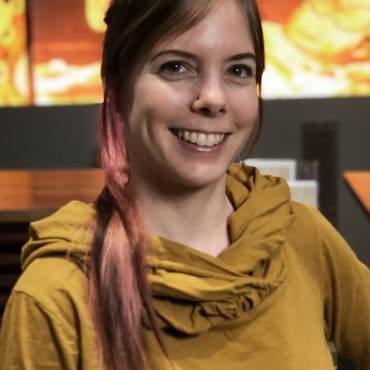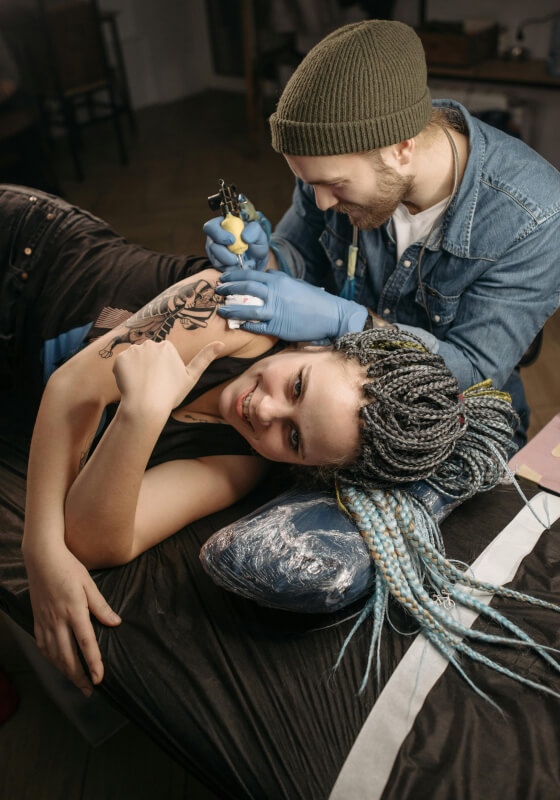

Schön dass du bei uns dein Tattoo planst
Wir verbinden unseren Namen mit der Vorstellung von höchster Qualität und herausragender Einzigartigkeit. Wir lieben die Kunst des Tätowierens und erschaffen täglich Tattoo-Kunstwerke, Erlebnisse und positive Erinnerungen. Unser Ziel ist es Euch den besten Service und die schönsten Tätowierungen anzubieten. Ehrlich, fair und ohne Cliché. Wir bilden uns ständig weiter und besuchen die größten Messen. Unsere Kollegen sind weltweit bekannt und anerkannt und unsere Supporting – Artists und Freunde ergänzen uns perfekt in allen Stilrichtungen. Wir arbeiten in unserem Studio gewissenhaft und anspruchsvoll und mit 100% Hygiene am Arbeitsplatz. Herzlich willkommen bei uns!
Piercing täglich
Wir bieten Euch bei uns im Shop täglich 10-17h alle Piercingarten an. Erfahrene Piercer Hygiene und persönliche Beratung stehen auf der ersten Stelle. Eine Preisliste findet Ihr Online.
Du wünschst dir ein ausführliches persönliches Gespräch und Beratung mit einem unserer Kollegen?
Du magst uns deine Story erzählen und dein Tattoo mit einem Kollegen von uns allein besprechen evtl außerhalb der Terminvereinbarungszeiten? Oder du hast einfach nur mehr Fragen um alles zu klären ? Buche jetzt ein 60 Min Gespräch mit einem unserer Kollegen ( kostenpflichtig ) Einfach übers Kontaktformular. und nenne uns den Kollegen oder Kollegin den/die du sprechen möchtest.
Natürlich erklären wir Euch alles im Tattoo Termin selbst bei einem bereits gebuchten Termin – ebenso nehmen wir Zeit für die Beratung/ Gestaltung – das ist völlig ausreichend. Der Wunsch nach einem persönlichen Termin ist aber bei vielen im Vorfeld da und uns bleibt leider nicht immer die Zeit im Alltagsgeschäft. Es ist uns auch finanziell nicht möglich mit jedem einzelnen ein komplexes 1Std Gespräch zu führen ohne einen vereinbarten Termin. Da kämen wir erst gar nicht zum Tätowieren. Hier bieten wir Euch also die Möglichkeit – ganz exklusive über Eure Tattoo-Wünsche zu reden, zu gestalten und Fragen zu stellen. Persönlich mit voller Aufmerksamkeit unserseits. ( Max 2 Personen 1 Artist 1 Kunde).

Are you Anansi? Werde Teil unseres Teams – wir sind ständig auf der Suche nach Freunden und Talenten.

Wir sind ein starkes außergewöhnlich engagiertes Team in der Haidhausent in München und unser Ziel ist es die besten Tattoos gepaart mit dem besten Service unseren Kunden anzubieten. Wir bilden uns nicht nur ständig weiter um uns in allen Bereichen wie Technik, Hygiene, Farben und Stilrichtungen mehr als nur up to date zu sein sondern sind auch auf der Suche nach Talenten und Kollegen die uns optimal ergänzen oder unterstützen. Lest mehr über die aktuellen Stellenausschreibungen hier.
So pflegst du dein Tattoo richtig
Hier könnt Ihr die Pflegeanleitung einsehen – und mehr über die Produkte erfahren die wir selbst empfehlen.
Jetzt Gutschein rund um die Uhr schnell Online bestellen
Jetzt Gutscheine schnell und einfach rund um die Uhr online bestellen. Wir haben nun endlich auch unser Online Gutschein System aktualisiert. Nie ging es einfacher einen Gutschein bei uns zu bestellen. Das rund um die Uhr natürlich. Ihr habt sogar die Möglichkeit bei Lust und Laune die Gutscheine selber zu gestalten. Die Entwertung erfolgt übers QR Code im Termin. Schnell und einfach. Verschenken, was wirklich gefällt und für ein ganzes Leben bleibt. Mit unserem Gutschein liegst du immer richtig. Ideal für verschiedene Anlässe wie Weihnachten, Geburtstage oder als Aufmerksamkeit zwischendurch. Einfacher geht es kaum. Ihr könnt unser Design wählen oder den Gutschein selber gestalten, individuell. Versandart könnt Ihr selber bestimmten. Die Gutscheine gibt es €100, €150, €200, €300, €350, €400, €450, €500)
Blackwork Darkwork
Goth Line NeoTraditional ganz düstere Motive und Themen – das ist Tim er entwirt und zeichnet Euch immer individuell.
Cover UP Color oder B&G Realismus mit Pete
Pete ist ein sehr erfahrener Kollege und meistert großflächiger Cover Up Projekte absolut souverän. Wenn es um Farb- oder B&G-Realismus geht ist unser Kollege oft die erste Wahl.
Cover UP Color oder B&G Realismus mit Pete

Pete ist ein sehr erfahrener Kollege und meistert großflächiger Cover Up Projekte absolut souverän. Wenn es um Farb- oder B&G-Realismus geht ist unser Kollege oft die erste Wahl

Pro7 Taff – Thema Cover Up Sendung bei Tattoo Anansi Rückblick 2017
Rückblick: wir blicken immer gern zurück an Momente die wir in unseren Studios erlebt haben. Ob Tattoos, oder eben die Aufnahmen mit einem Team hier mit Ronja Block und Taff in 2017. Dass wir hier mit Kunden aus Wuppertal zu tun hatten – die bereits hunderte km zu uns gefahren sind und dann doch nicht alles so einfach ging mit den Tattoos – könnt Ihr selbst hier einsehen.


















.png)


















































